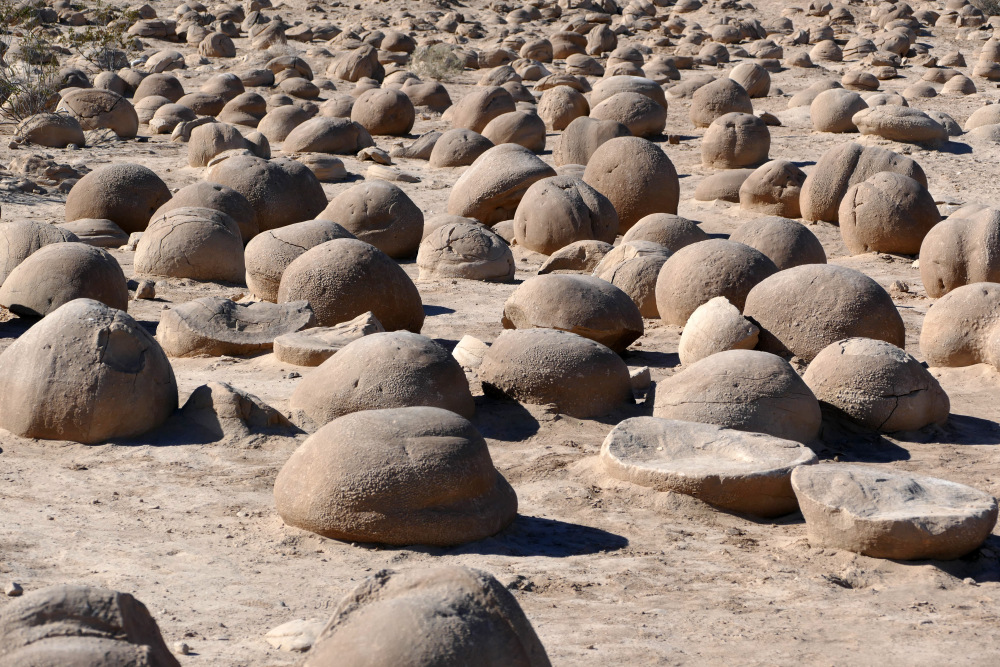
Craveology Cafe and the North Star Science Store are temporarily closed for renovation.

Image: ExploreCalifornia.pics
Just outside of Ocotillo Wells, near Anza-Borrego Desert State Park, sits a geologic phenomenon called the Pumpkin Patch due to the rocks’ size, shape and distribution in the field.
How did these rocks form? Why are the rocks a consistent shape and size and how do natural processes continue to expose more of these rocks over the years?
These rocks are a unique geologic feature called concretions, which form when layers of sediment build up around a nucleus like a pebble or a shell. Erosion from wind and water expose these rocks. Similarly, erosion shapes the concretions. Eventually, the same forces that expose the concretions will wear away each of these uniquely shaped rocks.
Resources
Desert USA: Concretions
Paleontological Research Institution: Concretions
The Adventure Portal: The Pumpkin Patch